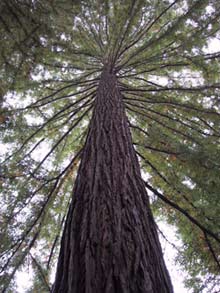 Researcher George Koch at the University of Arizona in Flagstaff, USA, has conducted measurements of the tallest trees in the world in the Humboldt Redwoods (scientific name Sequoia sempervirens – photo) in California, aiming to understand life at the uppermost levels.
Researcher George Koch at the University of Arizona in Flagstaff, USA, has conducted measurements of the tallest trees in the world in the Humboldt Redwoods (scientific name Sequoia sempervirens – photo) in California, aiming to understand life at the uppermost levels.
They found that despite the great distance from the ground, the leaves at the top can still absorb enough water, allowing them to survive frequent droughts. The challenge of transporting water to such heights is the reason that limits the height of this species of tree.
For redwood trees, the gravitational pull and friction between water and the xylem have created a barrier that prevents water from being lifted higher than 122-130 meters. From this, researchers have also determined the theoretical height limit for trees to be 130 meters, which is equivalent to a 35-story building.
In reality, a Sequoia sempervirens has been discovered with a height of 112.7 meters; however, this tree is over 2,000 years old, and past events such as droughts, strong winds, and lightning strikes may have hindered further growth.
NGUYỄN SINH


















































